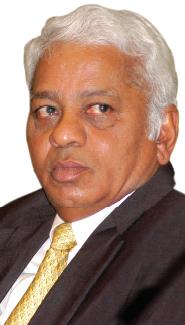Craig Shoemaker, Davenport, Iowa
IIPM BEST B-SCHOOL
Well,  exactly what you suggest: They should be teaching students how to lead and manage in different cultures. In fact, we’d make the case that the nitty-gritty of managing people – in any culture – should rank higher in the educational hierarchy. Over the past two years, we’ve visited 35 business schools around the world, and we’ve been repeatedly surprised by how little classroom attention is paid to hiring, motivating, team building and firing. Instead, business schools seem far more invested in teaching high-brain concepts: Disruptive technologies, complexity modeling and the like. Those may be useful, particularly if you join a consulting firm. But if you’re going to become a real manager, you have to know how to get the most from your people. Sadly, at most business schools the people teaching about people rarely get much respect.
exactly what you suggest: They should be teaching students how to lead and manage in different cultures. In fact, we’d make the case that the nitty-gritty of managing people – in any culture – should rank higher in the educational hierarchy. Over the past two years, we’ve visited 35 business schools around the world, and we’ve been repeatedly surprised by how little classroom attention is paid to hiring, motivating, team building and firing. Instead, business schools seem far more invested in teaching high-brain concepts: Disruptive technologies, complexity modeling and the like. Those may be useful, particularly if you join a consulting firm. But if you’re going to become a real manager, you have to know how to get the most from your people. Sadly, at most business schools the people teaching about people rarely get much respect.
The big hitters are in strategy and finance. We’d say that’s backward. Strategy and finance matter, of course, but without the right people running them, they’re nothing but theories in the sky. We hope that you have the clout to ensure that people management is a core subject in your university’s business school curriculum. If you do, you’ll launch your students’ careers with a real head start.
For Complete IIPM Article, Click on IIPM Article
Source : IIPM Editorial, 2006
An IIPM and Malay Chaudhuri – Arindam Chaudhuri Initiative
For More IIPM Article, Visit Below....
IIPM : WHAT’S SECURITISATION?
IIPM going global
IIPM Alliances
IIPM Academics : Global Outreach Program
IIPM Admission > Application Details
IIPM Students Life > Campus Resources
ABOUT IIPM
IIPM Students Life > Campus Placement
Story About IIPM-The Indian Institute of Planning and Management
IIPM Academics : Curriculum
IIPM : EDITORIAL & RESEARCH
 Mahanagar Telephone Nigam Ltd. (MTNL) is going great guns these days. After starting services in Nepal, this telecom major will now be providing basic fixed line, fixed wireless, pre-paid and post-paid mobile and ILD services in Mauritius. Though MTNL was granted the license to offer fixed and wireless services in 2004, it started providing the ISD services in June 2005 and has now made a headway with its cellular services in the island. MTNL has earmarked Rs.1 billion for the roll-out.
Mahanagar Telephone Nigam Ltd. (MTNL) is going great guns these days. After starting services in Nepal, this telecom major will now be providing basic fixed line, fixed wireless, pre-paid and post-paid mobile and ILD services in Mauritius. Though MTNL was granted the license to offer fixed and wireless services in 2004, it started providing the ISD services in June 2005 and has now made a headway with its cellular services in the island. MTNL has earmarked Rs.1 billion for the roll-out.




